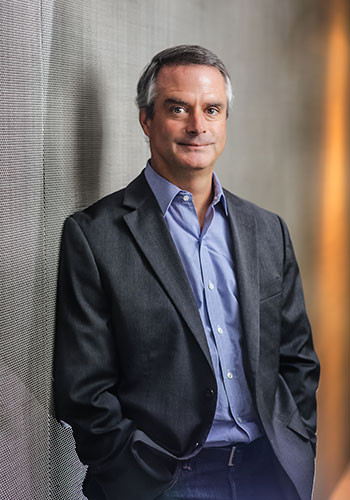
At CAS, we have two main goals: to educate and develop the next generation of informed leaders and citizens, and to expand the boundaries of human knowledge and understanding in ways that benefit society. To accomplish these goals, we rely in part on the generosity, engagement, and passion of our alumni and friends across the globe.
Examples of Donor Impact from the Past Year
Contributing endowed support for need-based scholarships and aid enables us to compete for talented students from lower-income households who enrich our CAS community
While alumni and donor support furthers our mission in many ways, several areas stand out:
Annual fund:
By providing CAS with current-use, unrestricted support, donors to the annual fund allow us the flexibility to channel resources where they are most needed and to react agilely to new funding needs that come up. This past year, these gifts allowed us to give our students the technology they needed for online learning and funds to address emergencies such as housing crises and unexpected travel and medical expenses. And they helped us provide training to PhD students who had lost their summer jobs, empowering them to work with faculty to make students’ remote learning experience as dynamic as their in-person experience.
Need-based financial aid:
Contributing endowed support for need-based scholarships and aid enables us to compete for talented students from lower-income households who enrich our CAS community. In 2019/20, for example, Dean’s Advisory Board member Ken Norton contributed need-based scholarship funding while Phil Gerdine made a gift to support students studying psychology—in memory of his wife Marjorie, a psychologist—with another $900,000 committed through his estate.

Experiential learning:
Out-of-the-classroom, or experiential learning—such as intensive research projects and internships—is extremely valuable real-world experience for our undergraduates. This past year, museum exhibition consultant Dwyer Brown (CAS’90) helped launch an internship and research fund for history of art & architecture students. We are also adapting many of these experiences to the remote world. For example, through our MetroBridge program, which pairs students with local governments, students will work with the City of Framingham to analyze minutes from public meetings and attend virtual community meetings to assess racial equity and inclusion.
CAS Parents and Families Fund:
During the 2019/20 academic year, we established this fund to allow parents and family members of CAS students to support our research and teaching mission.
Pathbreaking Research, Powered by Foundation Support
In 2019/20, CAS foundation and grant support for research enabled our faculty members to pursue important research across all fields in the liberal arts and sciences. Here are a couple of examples:
- Professor of Sociology Nazli Kibria received a $100,000 Voices for Economic Opportunity Grand Challenge Grant from the Gates Foundation and Raikes Foundation for her current research project, Cascading Lives: Stories of Loss, Resilience & Resistance. She will collect the life histories of people who have suffered economic decline to highlight the underlying causes and inspire empathy.
- The BU Center for the Humanities planned a summer program in the humanities for low-income high school students thanks to a $25,000 grant from the Teagle Foundation.
View the full Donor Roster for 2019/20.
View the fiscal year 2020 fundraising goals and totals.
Stewarding Our Resources
In order to achieve our many goals, we must remain careful stewards of our resources. This means monitoring closely and modifying, as needed, our long- and short-term goals, aligning resources at the college level according to these priorities, and being on the lookout for better ways to leverage our resources.
At the close of the 2020 fiscal year, the college (not including the Pardee School) achieved a balanced, unrestricted expense budget of $159,936,354. This budget covered faculty salaries ($87,993,610), staff salaries ($16,182,913), student salaries ($21,618,236 for fellowships, internships, etc.), operating expenses ($5,649,386), and fringe benefits ($28,492,209). Due to remote operations in spring 2020, CAS was able to reduce expenses and return $1,416,785 in savings to the University. (See Appendix, Budget.)
In the summer of 2020, the college also worked diligently to plan the necessary budget reductions for fiscal year 2021 in response to increased costs and reduced revenue as a result of the pandemic. We did this using guiding principles to: ensure our human capital; maintain our core teaching and research missions; consider the long-term health of the college; balance the impact across units and departments; and use data to inform decisions that are sustainable wherever possible.
We reduced our FY21 base budget by 4.95%, making $4,367,000 in recurring cuts and $2,183,000 in nonrecurring (onetime) cuts. To do this, we made a number of reductions, including reducing the number of classes with low enrollment, making a onetime cut to faculty research awards, working with each unit to reduce its operating budget, and other measures. We were able to make these cuts with very few layoffs.